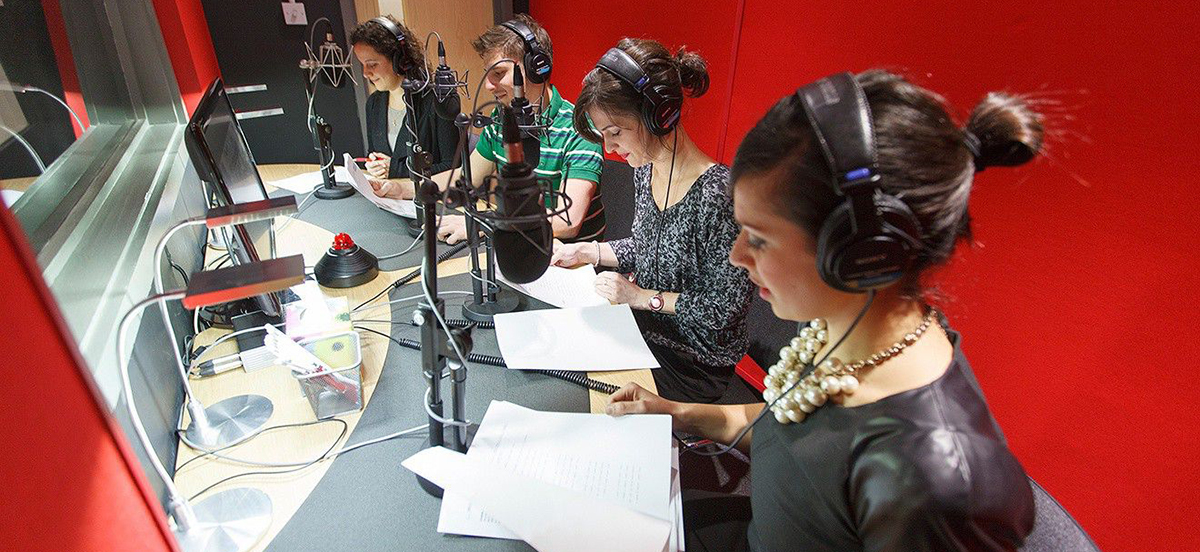Accurate, informed and consistent
Our dubbing and voice-over team can translate, lip-synch, record and complete all the post-production. Our service begins with a pre-analysis of the script, from which we draw conclusions regarding terminology and use of colloquialisms. We search collocations and order them by frequency; after which we translate collocations and create a glossary.
For each main character, we first upload his/her dialogues for analysis, for example:
1. Frequent use of the verb “to bust”.
2. Is it normally part of a sentence?
3. After “bust” we find “some” and “punks”.
Conclusion: “to bust some punks” is a characteristic sentence and must therefore be included in the glossary.
For scientific content (whether documentaries, or science fiction), this requires the creation of a glossary with specialised terminology.
We complete this process before starting the translation, and save the glossary (once it has been approved by the client). This process ensures that the speech patterns of each character are consistent – this is especially important for a TV series. One of our experienced audiovisual translators then translates the script, using our style guides and the glossary.
Finally, we offer linguistic proofreading, using a single proofreader per project. Our full service can also include post-production and mixing. In addition, by using a Translation Memory (TM) we can ensure long-term quality and consistency. The TM software stores all the translations, broken down into separate “segments” (sentences). These text segments are therefore available to be used again in future projects — we always like to assume your show will get a second season!
Typical problems with dubbing and voice-over:
- Linguistic mistakes.
- Translations full of structural, lexical and semantic calques from the source language. One consequence of the repetition of these calques is the use of an artificial version of the target language, which is very different to the spontaneous oral language that dubbing should strive towards.
- Inconsistency across long projects, for example a TV series in which the style changes from one episode to the next.
QuickSilver’s solutions:
- Linguistic quality-checking.
- Experienced audiovisual translators who understand the particularities of translation for dubbing. Our translators know when to depart from the original, if it is necessary to preserve the message. At the same time, they know how to enrich the text with linguistic twists particular to the target language. In this way they impart to the translation and dubbing the fluency expected of an audiovisual document.
- By using an internal style guide, glossaries and a dedicated manager for each project, we can guarantee cohesion and consistency between episodes.
Be assured that we always work with native-speaking voice-over talent and directors. You can ask for voice samples before the recording of your project.



